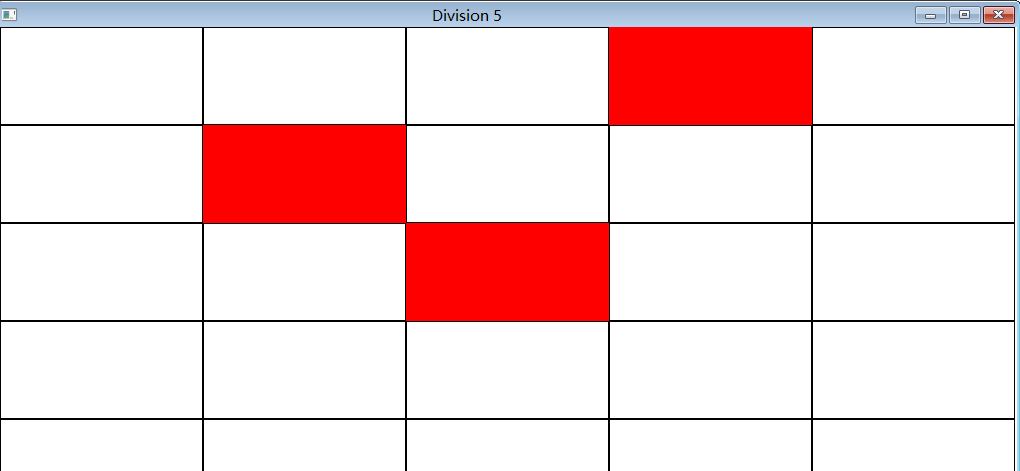Refugees
Almost home
China has successfully absorbed many refugees from Vietnam. But it is ill-prepared for another influx
Oct 10th 2015 | QIAOGANG, GUANGXI PROVINCE | From the print edition
来源:Economist
翻译:Z.K.

IN A restaurant in Qiaogang, a town in the southern province of Guangxi, a large poster of Mao Zedong—entitled “Red Sun”—hangs below one of a Vietnamese island where Wu Guangsui, the restaurant’s owner, was born. He fled to China by boat with his family in 1978 when relations between the once-friendly neighbours soured—resulting, the following year, in a brief but bloody war. Mr Wu (pictured), like some 300,000 other Vietnamese who sought refuge in China at the time, feared persecution in his home country for being a member of China’s ethnic majority.
在中国南方广西省侨港镇的一个餐馆里,一张大大的xxx画像悬挂在一张越南岛地图的下方,画像顶部还写着“红太阳”三个字。餐馆的主人吴广岁(音)出生于这个越南岛上,1978年他随家庭乘船逃到中国,当时这两个曾经友好的邻国关系恶化,导致了次年一场短期但是血腥的战争。吴先生(见图)和其他30万当时在中国寻求庇护的越南人一样,作为中国少数民族的一员,害怕在越南受到迫害。
These refugees are among the very few outsiders who have legally settled in China. Then impoverished, China is now the world’s second-largest economy and aspires to be a global power. Its working-age population is shrinking, yet it remains stubbornly reluctant to accept new entrants; thousands fleeing persecution or conflict in North Korea or Myanmar in recent years have faced deportation by the Chinese authorities. Those sent back to North Korea have often been imprisoned and sometimes executed on their return.
这些难民是极少数在中国合法定居的外地人的一部分。虽然贫困,但是现在中国是世界第二大经济体并且渴望成为一个全球性的大国。中国适龄劳动人口在缩减,但是仍然顽固地不愿接受外来者。最近几年,成千上万为躲避北朝鲜冲突或者缅甸冲突而来到中国的人们面临着被中国当局驱逐出境的风险。那些被遣返回北朝鲜的人们常常被抓进监狱,有的一回来就被处死。
It was different with the Vietnamese. At the height of the exodus, 100,000 people entered China through the border town of Dongxing in Guangxi—ten times the local population (see map). Government buildings, homes and schools were emptied to shelter them. They were later settled in six provinces. In 2006 António Guterres, the UN’s High Commissioner for Refugees, described this as “one of the most successful integration programmes in the world”.
但是越南人不同。在逃亡的高峰期,有10万人通过广西省东兴市的边境线进入中国,这个数量是当地人口的10倍。政府大楼,平民住房还有学校都被腾空以安置难民。随后,这些难民被安置在中国6个省份。2006年联合国难民事务高级专员安东尼奥·古特雷斯称之为“世界上最成功的整合方案之一”。
The government gave the new arrivals housing and jobs, many of them in state-run farms or factories set up especially for the Vietnamese. Mr Wu was sent to fish in Qiaogang, which means “overseas Chinese port”. It was built as a new village for immigrants. Within a decade many of the Vietnamese had been issued with identity cards and the household-registration documents that entitle holders to government-subsidised education and welfare. Some were given Chinese passports. Most now have full rights as Chinese citizens. The government, however, still classifies them as refugees. It may believe that this will discourage other would-be migrants who are thinking of fleeing to China from believing they will enjoy the same benefits as those who came from Vietnam.
政府给这些新来的人们提供房屋和工作,许多人在国企单位或者专为越南人开设的工厂工作。吴先生被派到侨港打鱼,侨港即“海外的中国港口”的意思。这是一个为难民新建的村庄。不到十年,这些越南人获得了身份证和户籍证,这些证件赋予了持有人获得政府教育资助和补贴的权利。有些人还获得了中国护照。大部分人享有中国公民所有的权利。但是政府仍然把他们视为难民。也许政府认为这样可以打消其他希望逃到中国来并取得与越南人一样的好处的移民。
Even the Vietnamese have had difficulties. Many are poorer than Chinese-born locals whose command of Mandarin and better contacts in southern China’s factory boomtowns have given them a leg up. Qiaogang is scruffy and decaying compared with the nearby city of Beihai, which has a forest of shiny new buildings. Some 50km (30 miles) inland at Liguang, one of the many “overseas Chinese farms” where Vietnamese were sent to work, former refugees now make up around a third of the population, but virtually all local businesses are Chinese-run; most Vietnamese remain on the land.
即便是越南人也经历过一些困难。许多人要比当地出生掌握了普通话的中国人要穷一些。但是在中国南方新兴都市工厂里较多的接触还是给了他们很大的帮助。与相邻的崭新的建筑森林城市北海相比,侨港显得破旧而衰败。距离侨港约50km的liguang是许多“海外的中国农场”之一,许多越南人被送到这里工作,原来的难民现在占到了总人口的1/3,但几乎所有的本土企业都是由中国人经营的,大多数越南人仍然在务农。
That Mr Wu and most of his compatriots already spoke Cantonese, in Guangxi, helped their integration. They belonged to the same ethnic-Han group that makes up more than 90% of China’s population. But they are often still treated as outsiders, even though they have lived in China far longer than they did in Vietnam, and consider themselves Chinese. People in Guangxi refer to them—and their China-born children—as huaqiao, or overseas Chinese. When there are conflicts, says Su Chungui, a Vietnamese farmer in Liguang, townsfolk call them “Vietnam ghosts”. In 2013 Mr Su and some compatriots planted cassava on wasteland to supplement their tiny income. But Chinese villagers destroyed the whole crop before harvest-time, says Mr Su: “We are outsiders, so when we argue, we compromise.” The immigrants did not retaliate.
吴先生和他的大部分同胞早就已经会讲广西省常用的广东话,这一点帮助了他们融入当地的生活。他们同属于汉族,汉族在中国占总人口的90%多。但是他们仍然常常被当做外来者,即便他们在中国居住的时间远比在越南居住的时间长并且认为自己是中国人。广西人把他们和他们在中国出生的孩子视为华侨,即海外华人。Su Chungui是在Liguang种田的越南人,他说,当发生冲突的时候,村民叫他们“越南佬”。2013年,苏先生和他的一些同胞在荒地上种植木薯以补充他们微薄的收入,但是在收割之前,中国村民毁掉了所有的作物。苏先生说:“我们是外来者,在争执中只好妥协。”这些移民没有报复。
The arrival of the Vietnamese was a turning point for a country that had long been shut off from most of the outside world, and that had experienced only outward flows since the Communists came to power: thousands of ethnic-Korean Chinese even fled to North Korea in the 1960s to escape famine. In 1979 the UN’s refugee agency, UNHCR, set up an office in Beijing. Three years later China signed the UN’s convention on handling refugees.
越南人的到来对于一个长期对外不开放,并且在xxx执政之后只经历过人口外流的国家来说,是一个转折点。19世纪60年代,成千上万朝鲜族中国人甚至逃饥荒到北朝鲜。1979年,联合国难民事务高级专员公署在北京设立了办事处,三年后,中国签署了关于处理难民的联合国公约。
Yet China has not yet passed its own laws reflecting the requirements of this treaty. It has no legal definition of a refugee. Aside from the Vietnamese, China has only 583 refugees on its books—most of them from Somalia and Nigeria. This year about 60,000 Burmese poured across the border into China to escape fighting between rebels and government forces. The Chinese government denied UNHCR access to the camps where they were briefly housed. Refugees from North Korea never even get shelter. China calls them “criminals” or “illegal economic migrants”—partly because it remains an ally of North Korea, but also because it fears attracting a lot more of them.
但是中国到目前为止还没有通过立法来体现这一公约的要求。难民没有法律地位。除了越南人,中国只有583民在籍难民,大多数来自索马里和尼日利亚。今年,约有6万缅甸人越过边境线来到中国以躲避反政府武装与政府军之间的战斗。中国政府拒绝联合国难民署获得他们被安置简要地所在地的要求。北朝鲜的难民从来没有得到庇护。中国称他们为“罪犯”或者“非法经济移民”,部分原因是因为中国仍然是北朝鲜的盟友,同时还担心会吸引更多来自北朝鲜的难民。
This is less about immediate practicalities: the displacement of around 5m people by an earthquake in Sichuan province in 2008 proved that the government can provide emergency shelter and medical care for large numbers. China worries more about the impact on social stability of a large number of jobless immigrants of different ethnicity from the Han majority. It has little appetite (and cash-strapped local governments even less) for longer-term care. It may need to find one. Should North Korea sink into chaos, the exodus could dwarf the one from Vietnam (though if the regime collapses, many refugees would head to South Korea). China’s only visible preparations so far have been to tighten security along the border.
这些都不算实际问题:中国成功安置了2008汶川地震造成的5百万难民足以证明政府有能力为更多的难民提供住所和医疗。中国更为担心的是这么多不同种族的无业难民对社会安定造成的影响。中国没有太多兴趣长期照顾这些难民(资金短缺的地方政府更加没有兴趣),也许它需要找到另外一个国家接纳这些难民。如果北朝鲜陷入混乱,那么从北朝鲜出逃的难民数量将大大超过越南难民(尽管如果北朝鲜政权垮台,许多难民将涌入南朝鲜)。迄今为止,中国唯一看得见的准备工作是加强边境沿线的安全。
From the print edition: China
PS:the displacement of around 5m people by an earthquake in Sichuan province in 2008 proved that the government can provide emergency shelter and medical care for large numbers.
中国有能力安置大量的难民,就必须接纳难民么?西方国家天天喊人权,怎么不接纳这些难民?这逻辑,真是呵呵了


















